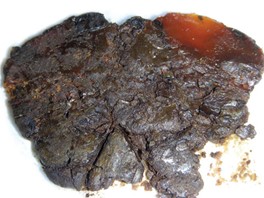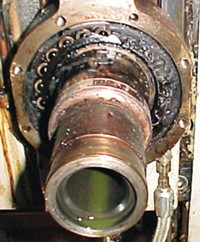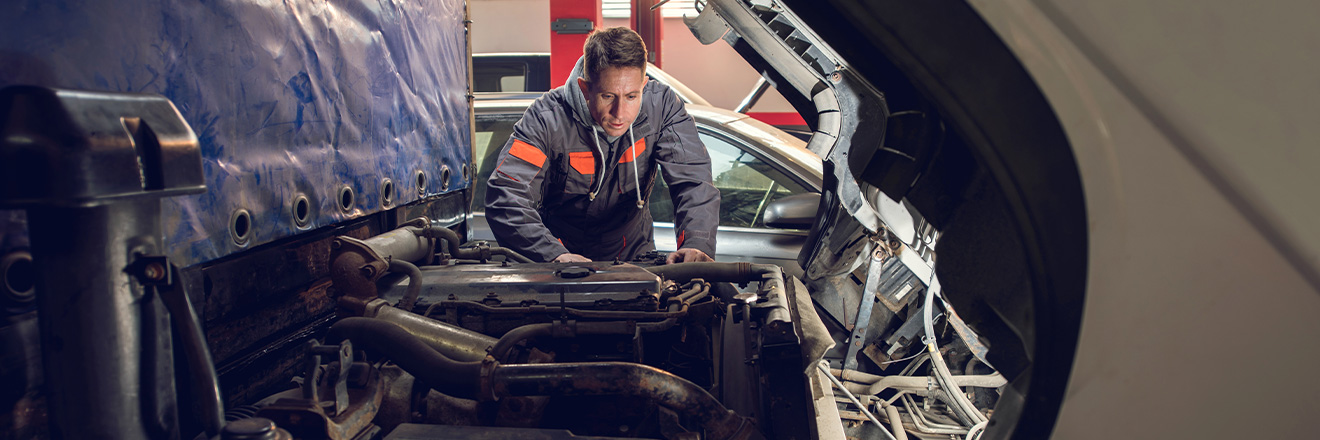One of the disadvantages of using grease is that it can cake and dry out. This can occur over a period of time when oil separates from the grease thickener. This can be seen when oil collects in unleveled grease pockets or when oil drips from the grease. Oil separation can harden the grease in equipment parts, reaching a potentially catastrophic state over time.
As the grease becomes dry, it can cause frictional forces to increase, causing the temperature to increase in different machine parts, such as the bearings. The elevated heat, in return, continues to dry out the grease. In time, and depending on the thickener and degradation conditions, the grease can begin to take on a consistency similar to hard putty.
Grease dry-out is a serious condition that can occur. This article will explore more in-depth the causes of grease dry-out and the effects this has on the grease and greased components. We'll also explore different remedy options, including selecting specialized, high-temperature greases, as well as potential prevention methods to help keep your grease and machinery healthy.
Causes of Grease Dry-Out
Contamination
Contaminants such as dust, dirt, ash, and similar dry contaminants can thicken the grease just like a gelling agent. A significant portion of contamination is caused by improper machine maintenance practices. In this way, dust and particles may come into contact with the grease when it is being dispensed into the machine part.
Incompatible Grease
Accidentally mixing incompatible greases can lead to accelerated de-gelling and oil separation. An example of this includes how organic clay greases clash with soap-thickened greases when combined.
High-Temperature Volatility
Greases made with a low-viscosity base oil are at the highest risk of volatilization. If you don't have a specialized, high-temperature grease, when temperatures begin to rise, oil can evaporate out of the thickener matrix, causing the grease to harden over time.

Figure 1. This grease image shows extreme thickening that resulted from copper prematurely oxidizing the base oil in the grease. The high concentration of cupric catalytic metals in the grease was from wear debris.
Base-Oil Oxidation
Oxidized oil can take on the physical appearance of roofing tar, and the same transformation can occur with grease. Figure 1 shows how a grease stored at room temperature hardened due to its high concentration of cupric catalytic metals that were present in the grease from wear debris. Ultimately, the copper prematurely oxidized the base oil in the grease, causing extreme thickening to occur.
Thermal Run-Away
Excessive grease in the bearings, mechanical conditions such as misalignment and excess preload, and starvation can lead to high-running temperatures. This can be associated with over-greasing, which causes churning, and in turn creates a high-heat environment. When the dropping point is reached like this, the grease begins to bleed causing the bearing to run dry and eventually completely fail. Figure 2 shows an example of this in action when a specialized, high-temperature grease isn't used.

Figure 2. This bearing displays the results of high running temperatures commonly associated with over-greasing. When the dropping point is reached, the grease begins to bleed, the bearing runs dry and eventually failure occurs.
Mechanical Wring-Out
Some types of rolling-element bearings are more prone to oil separation, such as spherical roller bearings. When grease is over-rolled by the bearings or gears, the oil can separate from the thickener. This is referred to as mechanical wring-out, and the oil is essentially squeezed, like a wet sponge. This is where having a high-temperature grease that has thickeners with good reversibility comes in handy. A grease is reversible when the oil can quickly reabsorb into the thickener after the load is relaxed.
Hydrostatic Extrusion
When under constant pressure, grease can be separated by hydrostatic forces. It's similar to water flowing through a sand filter; the sand stays put, but the water flows freely under pressure through the grains of sand. This is also known as sieving. By exposing the grease to constant pressure, the grease will bleed and oil will separate from its thickener. Some specialized greases are formulated to resist discharging by using special thickeners, special base oils and specialized additives.
Vibration and Centrifugal Forces
Grease can separate prematurely when exposed to prolonged vibrations and centrifugal forces. High-speed mechanical couplings can spin some grease products dry in a short period of time if the wrong grease is used. Among other negative outcomes, the significant difference in the specific gravity between the base oil and thickener can increase centrifugal separation.
Cake-Lock Failures
A cake-lock failure is a microscopic logjam. As the thickener dries out, it becomes immobile and blocks the flow path and reduces mechanical motion. While oil can flow through the thickener through hydrostatic extrusion, the thickener won't go anywhere. As more grease enters and oil exits, the more the logjam builds. Eventually a rigid binding condition develops from the stiff high-density cake that has built up. The cake-lock condition leads to thermal excursion and bearing failure. Bearings lubricated with centralized, or single-point auto-lubers, are at risk for cake-lock.
When soft grease is fed into the bearings but only oil emerges from the exhaust port, there is a cake-lock failure in progress; the thickener is logjammed in the bearing cavity. In centralized lubrication systems, cake blockage can also occur in the lines between the pump and the dosage injector.
To prevent cake-lock, select a suitable low-risk grease formulation and ensure the grease flow is high enough to avoid static conditions that give way to separation and blockage. Some long-fiber grease thickeners, such as simple sodium soaps, are particularly prone to grease-flow stability problems.
Standardized tests for mobility and pumpability are good for screening grease with high cake-lock risks. Frequent movement of grease can also keep the flow path fresh and inhibit blockage. However, there may still be some unavoidable zones of dry grease that build up in adjacent side cavities.
Condition Monitoring for Early Detection
There are several things you can do to increase your ability to detect early on if there are grease dry-out warning symptoms being displayed by your machines. First, vigilantly monitor the quality of lubricant that emerges from bearings in total-loss applications. Sampling grease from a catch pan for consistency, oil content analysis, oxidation and contamination can all be extremely helpful practices.
Next, use a lab with experience in analyzing used grease samples as the techniques vary greatly from standard ASTM grease-performance testing methods. Tools are also now available to extract grease samples directly from running bearing cavities.
You could also invest in technology to monitor bearing health, which is proving to be of significant value to plants around the world. This could include devices to monitor changes in temperature, noise and vibration. Not only is a condition monitoring system going to help predict when grease is drying out, but it will save you time and money by reducing unplanned downtime.
It is also worth reevaluating your current lubrication selections. Each grease is formulated differently depending on the type of environment that they will be performing in. To help prevent grease dry-out, you need a quality, high-temperature grease that has high dropping points but still maintains pumpability at lower temperatures. This way, you help protect your machines from the negative impacts of grease dry-out while helping your machines operate at peak performance.
Finally, always get feedback from rebuild shops on what they are seeing inside failed bearings. Any trait of grease that is questionable, such as its hardness or color, should be sampled for analysis. In this way, you can learn from the failure and use this information for continuous improvement and performance.
